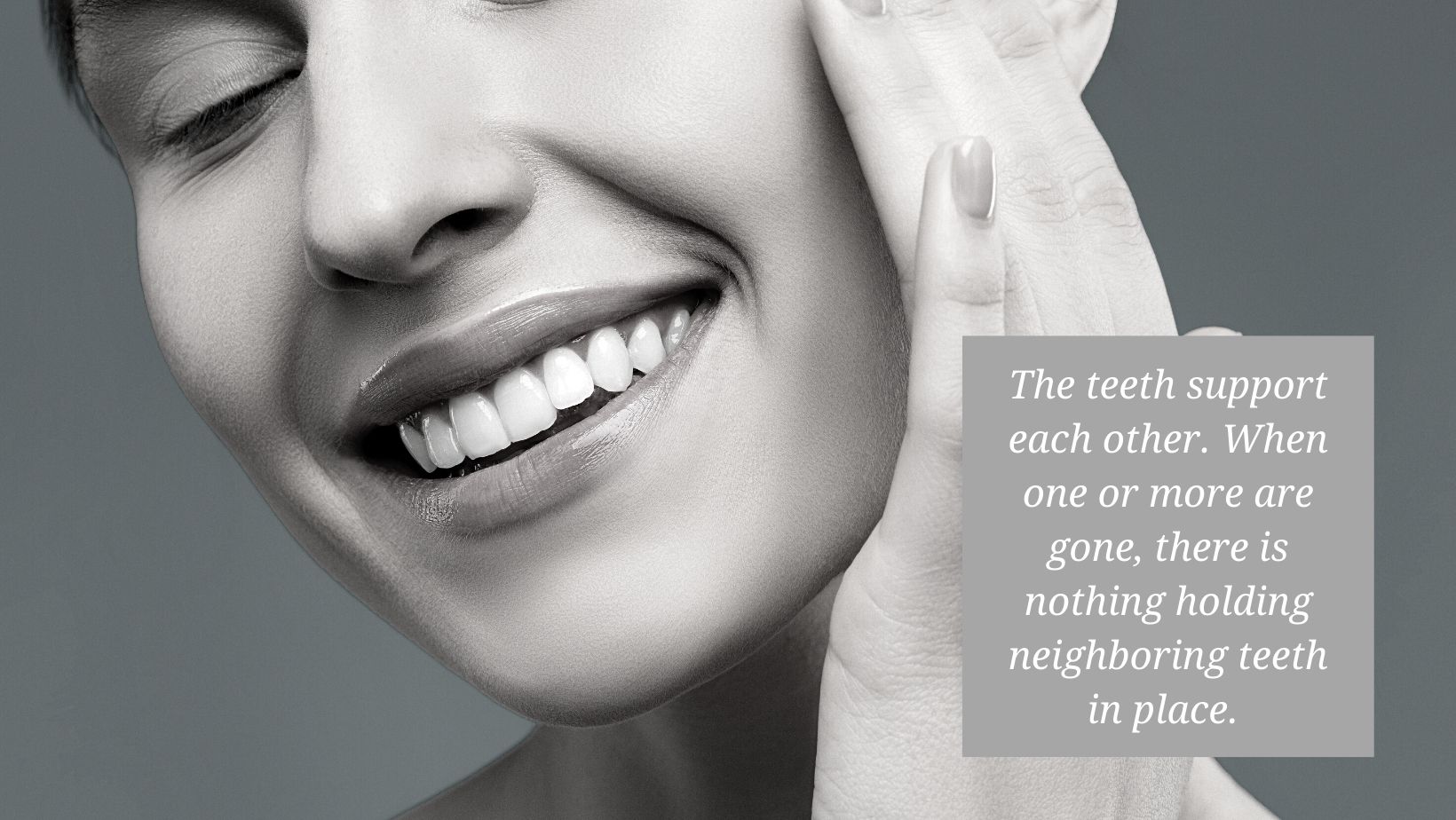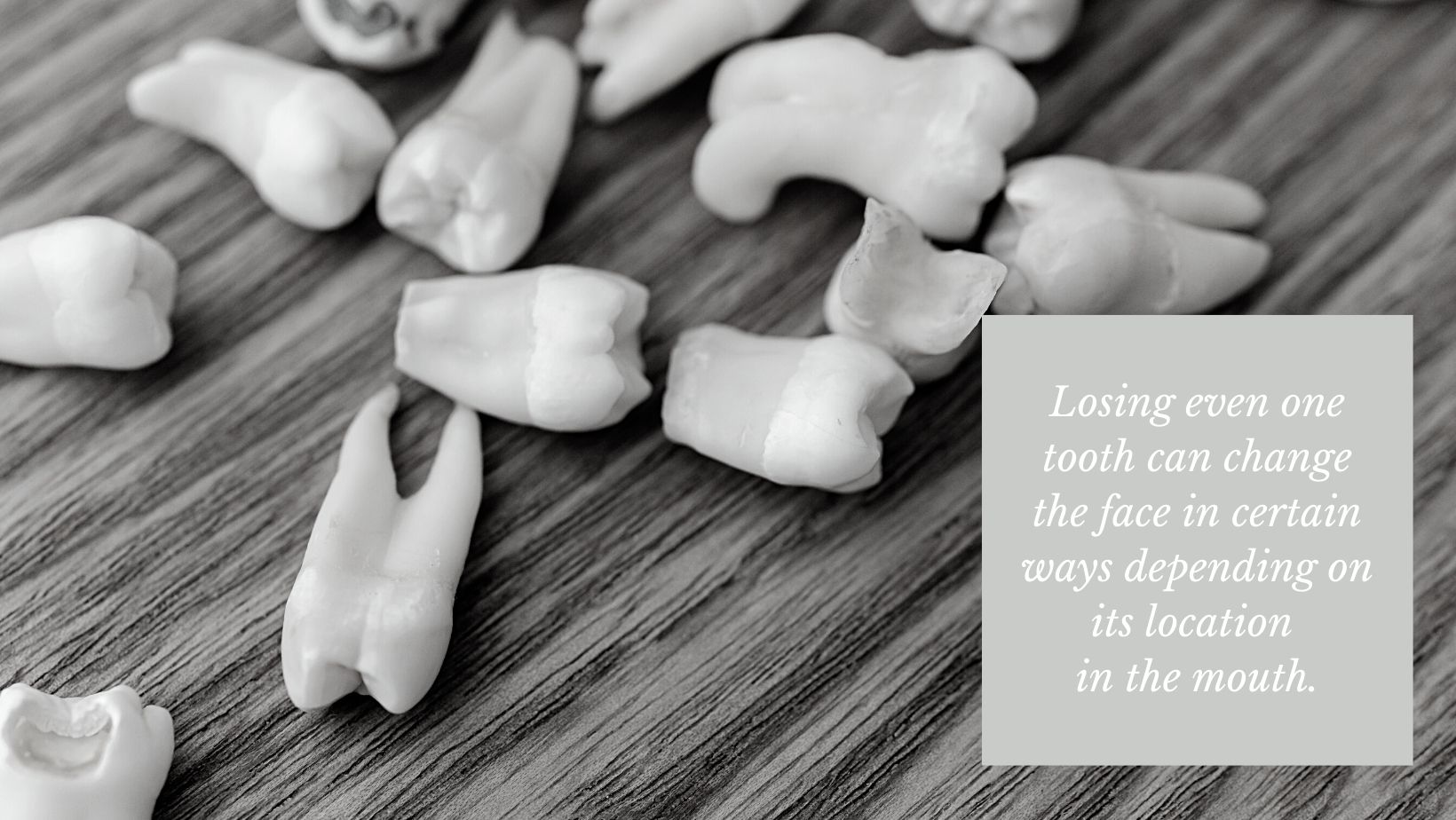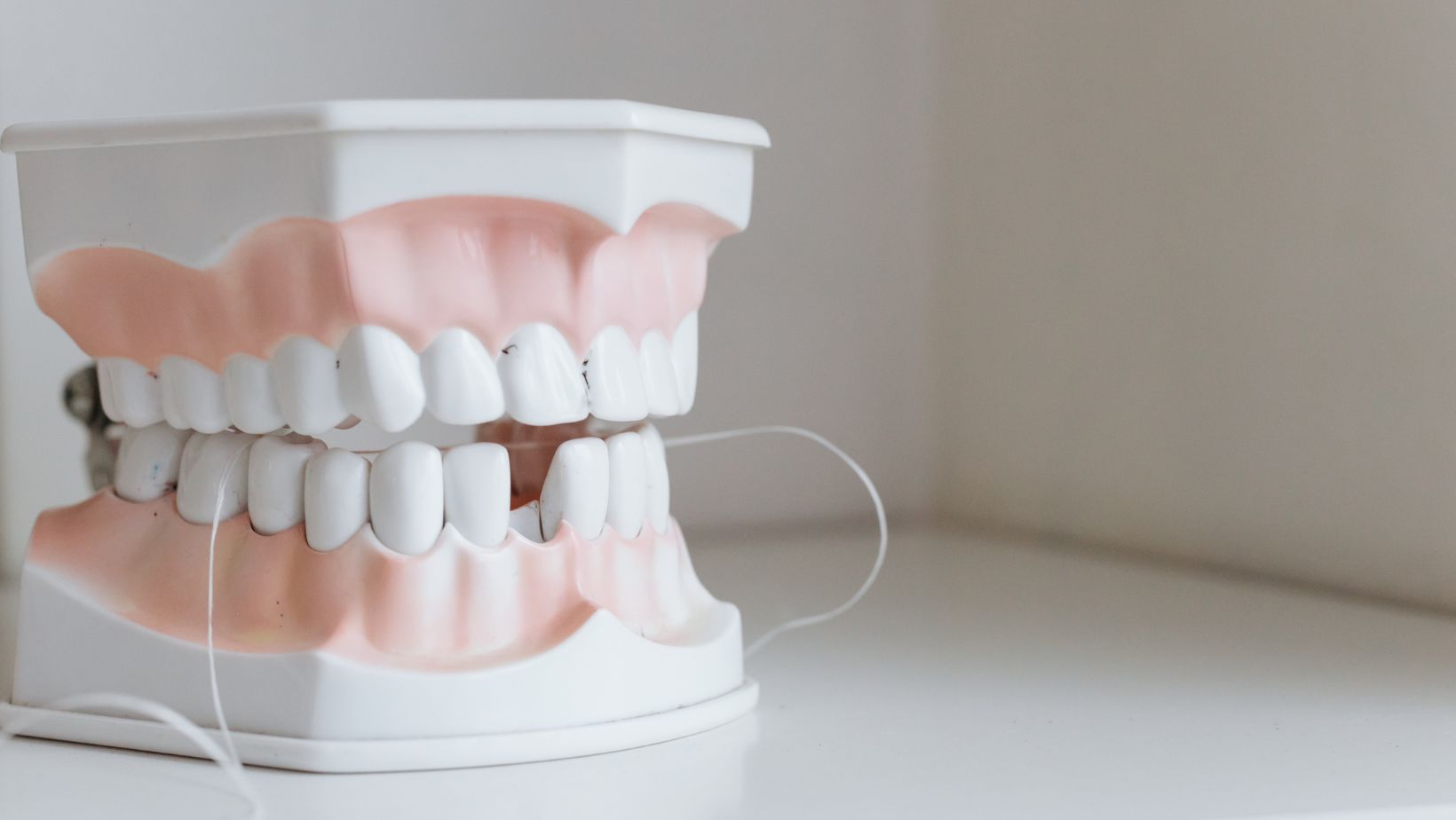According to the American College of Prosthodontists, more than 120 million people in the United States are missing at least one tooth. Whether they are knocked out or lost due to decay, missing teeth pose a number of problems besides just looking bad.
It might be harder to eat or speak clearly with a missing tooth. The space where a tooth once was can also be a place where bacteria collect. This can cause gum disease or decay in neighboring teeth. People with missing upper teeth might also suffer from sinus problems.
Those are all good reasons not to ignore the situation. But missing teeth can also change the facial bone structure. And the longer a patient waits to fix the problem, the more likely it is to affect the shape of their face.
Why Losing a Tooth is a Big Deal
A missing front tooth changes a person’s looks in an obvious way with a gap in their smile. But there is a lot more going on. Teeth help to stabilize the jaw and surrounding bones that give a face its structure.
Front teeth offer support to the facial muscles in the lips and cheeks. Molars help maintain the shape of the jawline. Losing that support can make the face sag and droop. Cheeks will look hollow.
The teeth also support each other. When one or more are gone, there is nothing holding neighboring teeth in place. The teeth will start to shift around and become misaligned. This can give the face an asymmetrical or lopsided look.
Why Losing a Tooth is a Big Deal
A missing front tooth changes a person’s looks in an obvious way with a gap in their smile. But there is a lot more going on. Teeth help to stabilize the jaw and surrounding bones that give a face its structure.
Front teeth offer support to the facial muscles in the lips and cheeks. Molars help maintain the shape of the jawline. Losing that support can make the face sag and droop. Cheeks will look hollow.
The teeth also support each other. When one or more are gone, there is nothing holding neighboring teeth in place. The teeth will start to shift around and become misaligned. This can give the face an asymmetrical or lopsided look.
The most serious face-changing result of missing teeth is potential bone loss. A jawbone without teeth will begin to deteriorate and shrink. Not only can this drastically change the face, but it is also a major concern for a person’s dental and physical health.

Dental restorations like dental implants, bridges, and dentures can fix the problems caused by missing teeth, but it’s important to act quickly before the changes become permanent.
Missing Teeth and Bone Loss
To understand why missing teeth are a serious matter, it is helpful to know a bit about bones. We tend to forget that bone is living tissue. It is capable of growing and healing, like when we have a broken bone or when the jaw bone grows around a dental implant post. Bones can also shrink. This happens as a person ages or when teeth are missing.
Bones need stimulation to maintain their density. Both the top and bottom jawbone are stimulated by the tooth roots when chewing. Losing a tooth means losing that root movement. The bone matter in that spot will start to break down and shrink. It will lose its shape and strength.
Alveolar bone is the type of bone that is in direct contact with the teeth and holds them in place. It is slightly softer than basal bone, which makes up most of the jawbone. When a tooth is missing, the alveolar bone is affected first and will start to lose mass—a process called resorption. Eventually, the basal bone beneath it can shrink too. There is a danger of losing even more teeth when the jawbone is weakened. Greater susceptibility to fractures is a possibility too.
The upper jaw, called the maxilla, is attached to the eye sockets and nose. The chin is part of the mandible or lower jaw. A deteriorating jaw will be unable to support these other areas, adding to a sagging and sunken look across the entire face.
Resorption of the jawbones is the reason why facial features will look different. Luckily, the process can often be stopped or reversed by dental restorations like dental implants and bone grafts. But it is even better if the problem is avoided entirely with good dental hygiene that will keep teeth healthy and intact.
What You Could Look Like With Missing Teeth
Losing even one tooth can change the face in certain ways depending on its location in the mouth. Losing several will only make the problem worse. These are some specific features you may notice:
Asymmetry
When a tooth is gone, there is nothing to hold the other teeth in place. They will start to drift out of alignment. This can cause malocclusions such as an exaggerated underbite, overbite, or crossbite, depending on the location of the missing tooth.
The teeth will not meet in the proper way and in the right spots when the patient bites down. With chewing and talking over time, the jawbone will move too. Instead of coming together in a straight line, the jaw bones will meet at an angle. The face will look off-kilter and lopsided, with one side of the jaw higher than the other. Patients may also experience pain and conditions like TMJ.

Sunken Cheeks
Lost molars leave an empty space where the sides of the mouth can cave in and look hollow. This is especially true when the top molars are missing. As time goes on, bone loss will make the sagging look even more pronounced, resulting in a gaunt appearance.
Compressed Jaw
Molars are responsible for maintaining the height of the face. As bone mass is lost from missing teeth, the jawbone gets smaller. A diminished jawbone makes the entire bottom part of the face look shorter and squished together. The bottom jaw can also rotate forward as it shrinks, creating a receding chin and collapsed look.
Permanent Frown
Without front teeth to support the muscles around the lips, the shape of the lips and mouth can change. The muscles will slacken, causing the corners of the mouth to turn down into a frown. This can also cause sagging and wrinkles and make a person look older.
Reversing the Effect of Missing Teeth on Your Face
Of course, it is best to never lose a tooth in the first place. Good dental hygiene and regular dental checkups will go a long way toward maintaining healthy teeth. But if a tooth is broken or knocked out due to trauma, or is damaged beyond repair and must be extracted, the patient does not have to live with a missing tooth.
The good news is there are ways to stop and even reverse the way missing teeth affect your facial features. Implants, bridges, and dentures can all help to fill out the empty spaces.
Dental implants, in particular, can do the most to support and stabilize the rest of the teeth and jaw, so that the face can regain its appearance. Filling in the gap with an artificial crown is only part of the process. When a dental implant is put into the jawbone, the bone grows to surround and fuse to the post. Implant surgery actually helps to regenerate healthy bone tissue and rebuild the jaw—which, in turn, will fill out the shape of the face.
Waiting too long to fix a missing tooth allows the bone to start resorption. If the jaw is too weak or has shrunken too much, bone grafts might be needed to prepare the site for an implant. This will give the jaw the structure it needs to anchor the implant post.
If too much time has passed and the bones are too far gone, dentures or bridges are also viable options. Whichever type of restoration a patient chooses, the important thing is to fix it as quickly as possible so no further damage occurs.
To find a dentist who specializes in implants and other tooth restorations near you, try our online search tool. The Dental Health Society database includes dental professionals all over the country who can restore your tooth—and the shape of your face.


